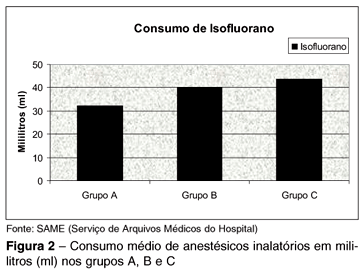OBJETIVO: Avaliar a eficácia do bloqueio do nervo supraescapular associado à infusão de anestésico no espaço subacromial e compará-lo ao bloqueio interescalênico. MÉTODO: Avaliamos, prospectivamente e comparativamente, a eficácia dos métodos anestésicos em 45 pacientes com lesões pequenas ou médias isoladas do tendão do supraespinhal submetidos ao reparo artroscópico. Os pacientes foram divididos aleatoriamente em três grupos de 15, cada um com uma diferente combinação de métodos anestésicos. A eficácia da analgesia pós-operatória foi mensurada utilizando-se a escala visual da dor e consumo de drogas analgésicas, anti-inflamatórias e opioides. O consumo de anestésicos inalatórios durante a cirurgia também foi comparado entre os grupos. RESULTADOS: A análise estatística não encontrou diferenças estatisticamente significativas entre os grupos com relação ao consumo de anestésico durante a cirurgia e a eficácia analgésica pós-operatória nas primeiras 48 horas. CONCLUSÃO: O bloqueio do nervo supraescapular associado à infusão de anestésico no espaço subacromial é uma excelente alternativa ao bloqueio interescalênico, particularmente em hospitais que não dispõem do estimulador elétrico de nervo.
Bainha rotadora; Ombro; Artroscopia; Anestesia; Bloqueio nervoso




